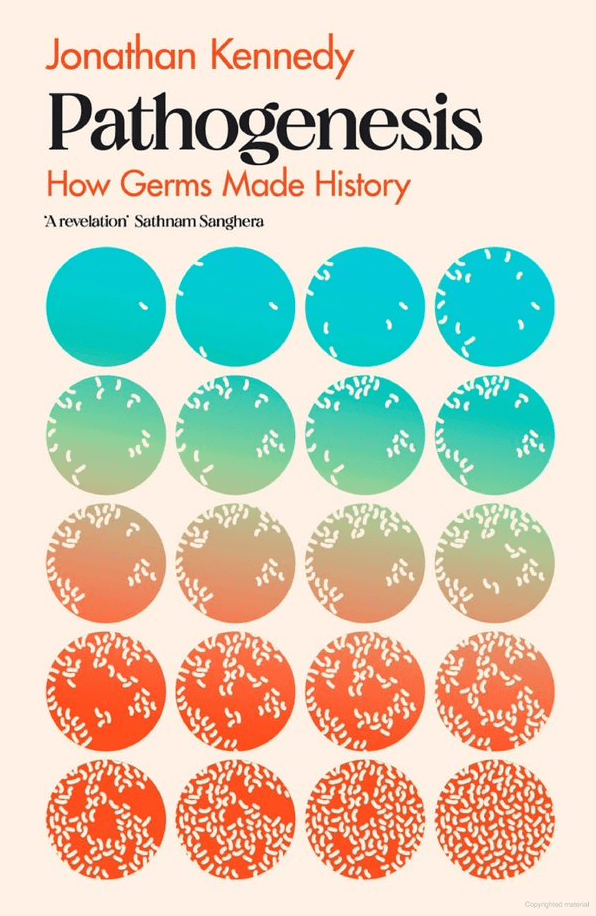Arpan K. Banerjee
Solihull, UK

I do not use superlatives lightly, but this is an extraordinary book. It is ambitious in scope and seeks to describe the progress of humanity from earliest times with an emphasis on the role of infectious diseases in our cultural, economic, political, and scientific development. Drawing from disciplines as diverse as anthropology, history, sociology, economics, politics, science, and medicine, Kennedy argues that although humans have made great advances over time, history is not often made in the circumstances of our choosing. Rather, it is influenced by impersonal forces such as climate, geography, and disease. Many great events occurred because of opportunities created by devastating epidemics, and not, to quote the author, by people “bending the arc of history.”
Research has shown that with the adoption of agriculture, human populations became more settled. But with increased trade, the setting was right for the proliferation of infectious diseases. In West Africa, mosquito-borne diseases proliferated in agricultural communities, which had replaced the nomadic hunter-gatherers of previous generations.
In the fifth century BC, Athens under Pericles was devastated by a pandemic, the nature and origin of which is not clear even today. What is of interest is that the city of Athens had increased vastly in size. People had migrated from villages to the city, resulting in a near quadrupling of the population. Crowding and unsanitary conditions would have allowed infections to spread rapidly. Nomadic communities, however, were often immune to outbreaks of infectious diseases. This changed with the formation of cities.
The Arabian empire was formed at a time when plague was devastating Europe. The nomadic Bedouins were less prone to diseases spread by flea-carrying rats. Plague eventually destroyed the Roman Empire as Muslim armies scored victories in much of the Byzantine region. The pagan beliefs of the Romans were gradually replaced by the rise of Christianity, which provided solace to those ravaged by the infections rampaging Europe.
Colonialism and slavery were closely intertwined with the prevalence of and resistance to infectious diseases. Slave workers in Caribbean sugar plantations had better immunity to some diseases, which had been acquired in Africa. European conquistadors had no resistance to these diseases. Conversely, the conquering of Latin America by Spain occurred in no small part because of the spread of smallpox introduced by the Spaniards, which decimated local populations. Similar issues surrounded the colonization of many African countries. Mosquito-borne diseases like malaria were the scourge of European colonizers such as Mungo Park. Eventually, explorers like David Livingstone succeeded in exploring the African continent because of the discovery of quinine’s protective effects.
The industrial revolution provided prosperity for many, but essential sanitation was often lacking, and crowding and poverty were prevalent in industrial cities of the nineteenth century. It was only with improvements in sanitation that the health of the population improved. Infectious and diarrheal diseases are still rife in many parts of the world today, despite the medical advances of the last century.
This beautifully written and well researched book takes the reader on a historical journey through humanity’s past and illustrates the importance that infectious diseases have had on human civilization. It is a stark reminder of how human progress and economic and political development are closely intertwined with disease outbreaks throughout history.
Pathogenesis: How Germs Made History
Jonathan Kennedy
Torva, 2023
ISBN 9781911709053
DR. ARPAN K. BANERJEE qualified in medicine at St Thomas’s Hospital Medical School, London. He was a consultant radiologist in Birmingham 1995–2019. He was President of the radiology section of the RSM 2005–2007 and on the scientific committee of the Royal College of Radiologists 2012–2016. He was Chairman of the British Society for the History of Radiology 2012–2017. He is Chairman of ISHRAD. He is author/co-author of papers on a variety of clinical, radiological, and medical historical topics and seven books, including Classic Papers in Modern Diagnostic Radiology (2005) and The History of Radiology (OUP 2013).

Leave a Reply